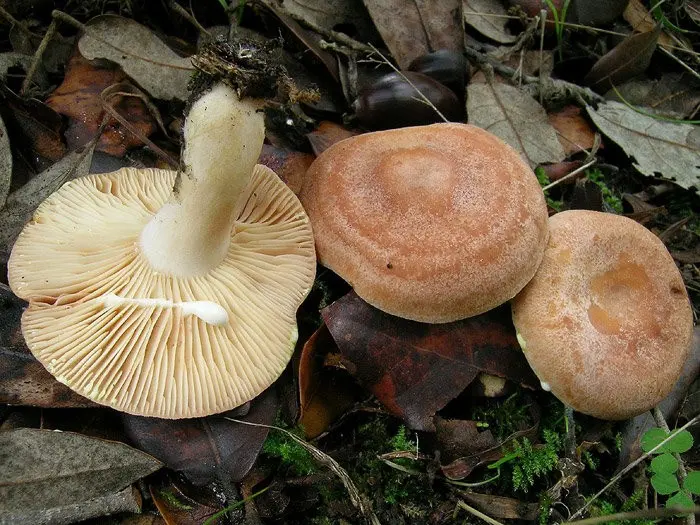Golden yellow breast (Lactarius chrysorrheus)
- Division: Basidiomycota (Basidiomycetes)
- Subdivision: Agaricomycotina (Agaricomycetes)
- Class: Agaricomycetes (Agaricomycetes)
- Subclass: Incertae sedis (of uncertain position)
- Order: Russulales (Russulovye)
- Family: Russulaceae (Russula)
- Genus: Lactarius (Milky)
- Type: Lactarius chrysorrheus (Golden yellow breast)
- Milky golden breast
- milky golden

Breast golden yellow (lat. Lactarius chrysorrheus) is a fungus in the genus Milkweed (Latin Lactarius) of the Russulaceae family. Nesedoben.
External Description
At first, the cap is convex, then prostrate, and slightly depressed at the end, with strongly tucked edges. Matte smooth skin covered with dark spots. Smooth cylindrical stem, slightly thickened at the base. Narrow thick plates, often bifurcated at the ends. Fragile white flesh, odorless and with a sharp taste. White spores with a reticulate amyloid ornament, similar to short ellipses, size – 7-8,5 x 6-6,5 microns. The color of the cap varies from yellow-buff with dark spots of various sizes and shapes. At first, the stem is solid, then whitish and hollow, gradually turning into pinkish-orange. Young mushrooms have white plates, mature ones have pink ones. When cut, the mushroom secretes a milky juice, which quickly acquires a golden yellow color in the air. The mushroom at first seems sweetish, but soon bitterness is felt and the taste becomes very sharp.
Edibility
Inedible.
Habitat
It occurs in small groups or singly in deciduous forests, mainly under chestnut and oak trees, in the mountains and on the hills.
Season
Summer autumn.
Similar species
It is strongly similar to the inedible milky milky Porne, which is distinguished by white milk, bitter taste, apple-like pulp smell, and is found only under larches.









